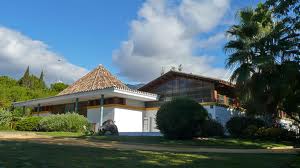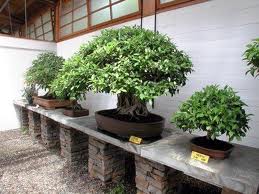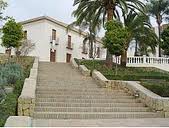More Marbella Museums
If you are thinking about visiting Marbella we recommend this and other Marbella museums.
For more Marbella activities and history we recommend checking out a Marbella travel guide.
Bonsai Museum

Where: Parque Arroyo de la Represa, Avda. Del Dr. Maíz Viñal
Opening hours: Open every day during the summer (July 1 - August 31) from 10.30 am to 1.30 pm and from 5 pm to 8.30 pm. Open every day during the winter (September 1 - June 30) from 10.30 am to 1.30 pm and from 4 pm to 7.30 pm
Bonsai is a Japanese word that means tray cultivation or tray nature and it is the art of growing trees and plants in pots, using special techniques to reduce their size (such as transplanting, pruning, wiring, clamping, etc) and giving it a shape so it will evoke a natural scene.
The origin of Bonsai dates back over 1,000 years. Created in China, it was a cult object for Taoists, to whom it was a symbol of eternity and a bridge between humanity and divinity, heaven and earth.

Naturally, for western civilization it may not have the same meaning. However, it is a form of art that has crossed borders, and Marbella has its own Bonsai Museum, which exhibits a collection of Bonsai and miniature forests. The wild olive collection, exhibited on sculpted stone, stands out particularly. Other outstanding species are the European nettle tree and a 300 year old olive tree. Some of the collection's Bonsai are from the nature surrounding Marbella, including a Spanish fir, in danger of extinction.
The Marbella Bonsai Museum was built with the private collection of Don Miguel Angel García (creator of these natural works of art) who offered it to the town's mayor, Jesús Gil for a museum dedicated to Bonsai. In 1992 the museum opened under the direction of the collection's owner, who remained in this position until year 2000, when he was succeeded by his son Rodrigo García.
The Marbella Bonsai Museum is known as one of the best bonsai collections in Europe and the best collection of wild olives in the world. Many of them are part of natural recreations, where water is a central element.
Cortijo Miraflores - Miraflores Farmhouse Museum
Where: Avda. José Luis Morales y Marín, s/n, 29601
Opening times: Winter from 9 am to 2.30 pm and 5 pm to 9.30 pm. Free entry

In 1706, a country farmhouse was built by order of Francisco Domínguez y Godoy over the remains of an older house which belonged to his grandfather, Melchor Domínguez. It had rooms for accommodation, a sugar mill and later an oil mill. The construction underwent several modification through the years, until, during the first half of the 19th century, Antonio Domínguez Albuquerque gave it its current structure. It was during those years that it began to be known as Cortijo Miraflores – Miraflores farmhouse.
Some of the museum's features include a beautiful garden, conformed by exotic and exuberant botanical species, and a series of decorative elements in the interior of the house, such as medallions depicting saints, and contemporary tiles illustrating the apparition of the virgin to Saint James.
Two carved-stone coats of arms remain, one of them representing the Franciscan order, and the other displaying the heraldry of the Domínguez family. Another of the objects exhibited is a Mudéjar armour. The Historical Municipal Archive is kept in the Miraflores Farmhouse, as well as a 19th century oil press and two hydraulic presses.
When Tomás Domínguez, the owner of the property, died in 1886, the country estate went to a different family, falling into disrepair after many years of neglect. Eventually, however, it fell into the hands of the Marbella City Hall and it was renovated and restored to become a museum, with the aim of creating spaces for exhibitions and other cultural activities. The Cortijo Miraflores museum hosts permanent and temporary exhibitions, conferences, recitals, concerts and many more activities.



